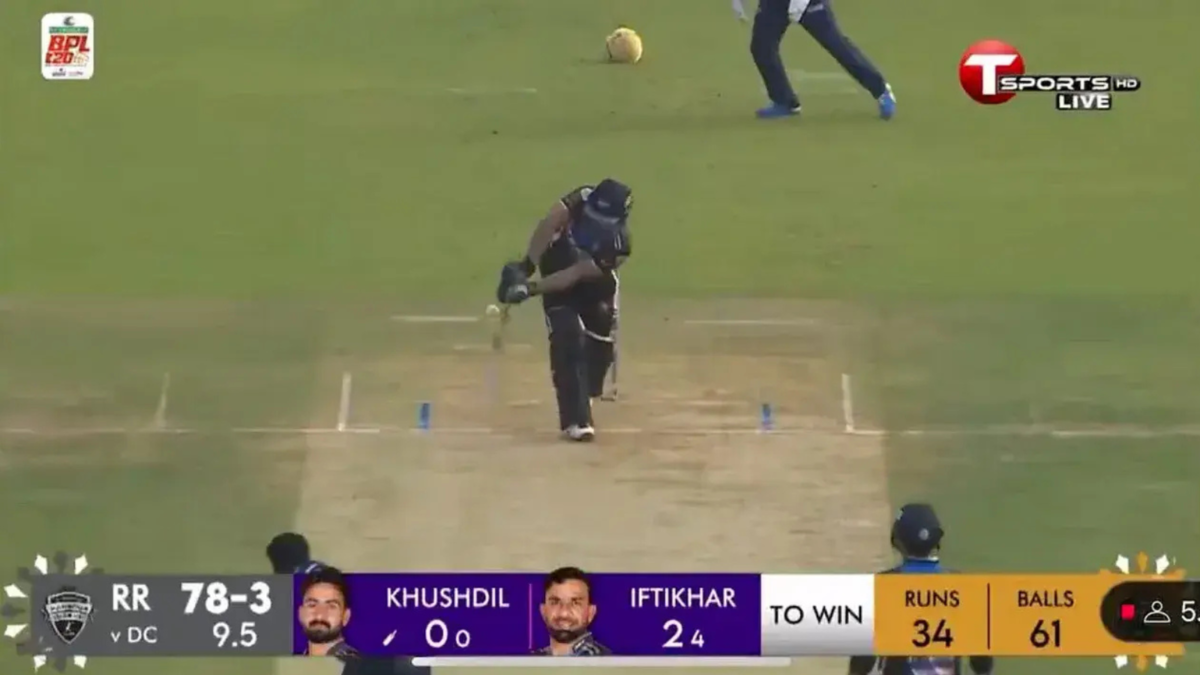
This incident is from the 11th match between Dhaka Capital and Rangpur Riders in Sylhet.

The Bangladesh Premier League (BPL) 2025 has been severely scrutinised following the recent odd events, with match-fixing allegations aplenty. This incident is from the 11th match between Dhaka Capital and Rangpur Riders in Sylhet, where Alauddin Babu bowled as many as three consecutive wides, the first of which also went for a boundary.
Following the eighth over’s conclusion, Rangpur Riders were 54/1, and, according to Jarrod Kimber’s piece on substack, the money came for a score of over 79.5 after ten overs. However, the set batter Alex Hales, who scored 44 runs in 27 deliveries, got out on the fourth delivery of the ninth over, and the score read 61/2.
But even after his dismissal, the money came for over 78.5, meaning 18 runs in eight deliveries. Iftikhar Ahmed played two consecutive dot balls in the tenth over, and the equation was 12 off four balls, but the market still predicted over 78.5 run line.
Jason Roy dropped Iftikhar’s catch on the third ball of the over, and the two took a single. Then Saif Hassan hit a boundary, bringing the equation down to seven runs in two balls but got out on the next delivery to make it seven in a solitary delivery.
Jarrod writes in his piece that the chances of seven runs in one ball are less than 4.8%, and the batter was facing his maiden delivery of the match. However, the market still predicted over 78.5, which is bizarre, given that no batter can score seven runs in one ball.
However, what followed was not only shocking but also susceptible. Alauddin Babu bowled one of the worst deliveries possible, spraying down the leg side so much that the ball passed outside the return crease and raced away to the boundary, giving five runs and bringing the scenario down to two runs in one ball.
“Oh my goodness, that’s possibly a no-ball, where did it land, on the other pitch? What’s going on here?” exclaimed a shocked Shamim Chowdhury on air.
On the next attempt, Alauddin bowled another delivery outside the return crease, this time on the other side of the pitch. The next delivery was again wide, not as big as the previous two but big enough to doubt you of suspicious things.
The score read 79 in 9.5 overs, meaning the market was right all along. Jarrod writes that it was only thrice that the tenth over had seen three consecutive wides in 2919 overs.
In those 17 runs required from seven balls, 12 came via wides, meaning 70.6% of runs in extras. Jarrod’s piece also tells that only four times in 8245 matches have 12 runs scored in a 17-run period in the first ten overs.
While such things can occur on a cricket field, it’s weird that the market was unfazed despite the contrary events unfolding. Other dubious occurrences in the competition have also occurred, and the market has gotten them right, which makes you wonder whether all that happened on the field was intentional or just cricket.
For more updates, follow CricXtasy on Facebook, Instagram, Twitter, Telegram, and YouTube.